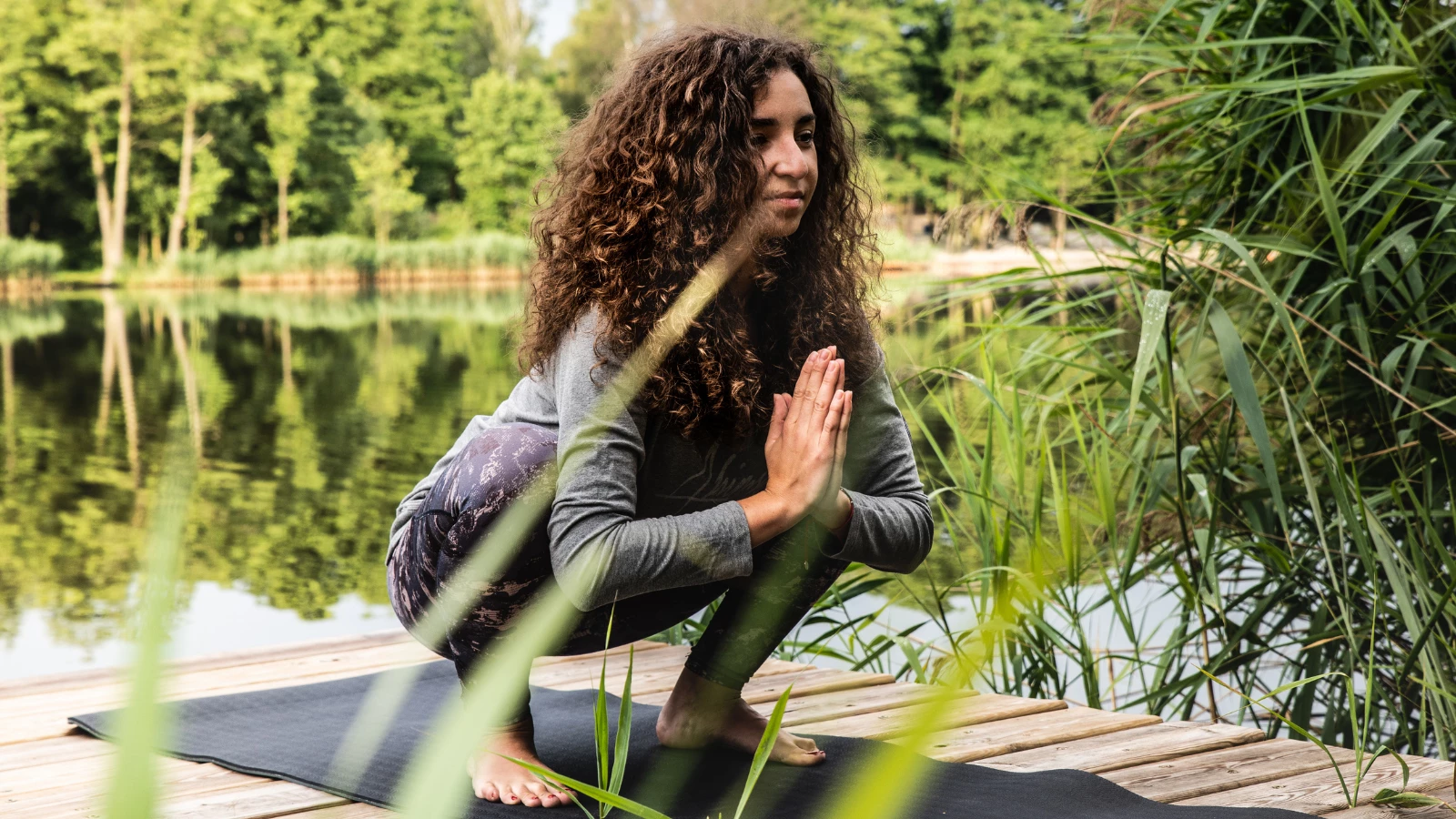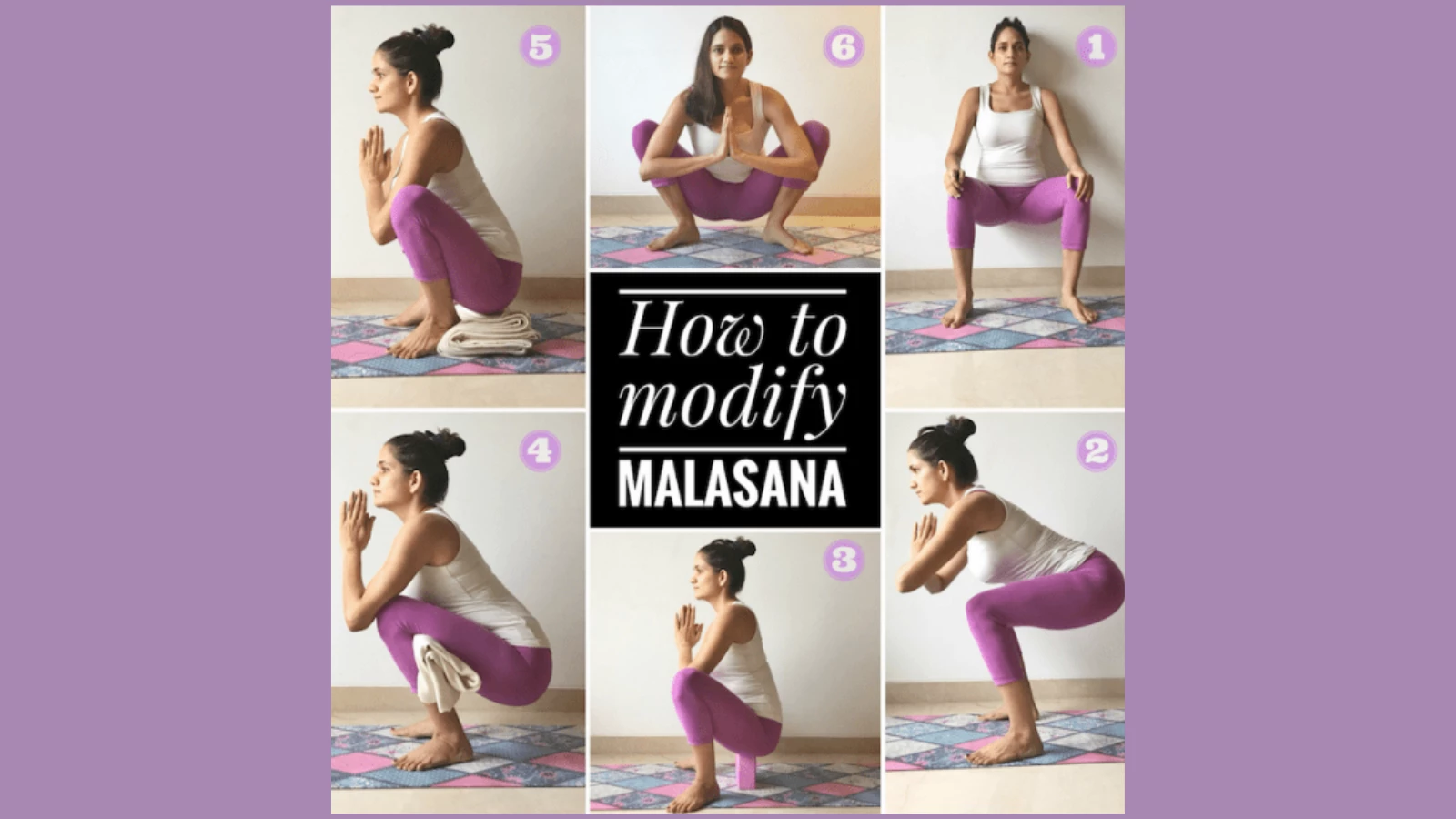Activate the Joints with Yogic Sukshma Vyayama

Article At A Glance
Yogic Sukshma Vyayama techniques are considered to be extremely powerful, as they activate the subtle pranic body. Their benefits include developing memory, intellect, willpower and sharpening the senses. Practice Sukshma Vyayama movements to improve joint health and overall well-being.
In yoga, it is said that most pranic blockages start in our joints. Ayurveda says that ama, or the toxic and undigested waste material tends to settle in the empty spaces of our body, the joints. That is why we practice Sukshma Vyayama, to release any such impurities.
Our joints provide us with mobility by connecting two bones, allowing us to move rather than being stiff like a log of wood. However, our joints are not simply made up of bones. In order to prevent them from deteriorating due to friction and erosion, our joints contain tissues such as cartilage and synovial fluid, which help keep bones from grating against each other. If this cartilage depletes due to age, injury, or wear and tear, then we start experiencing issues like joint pain and arthritis.
There are many factors that contribute to keeping our joints healthy. These include nutrition, a balanced exercise routine, good posture, stress management, etc. In this article, I’m sharing some simple, traditional yogic movements to activate and mobilize the joints. These do not take more than 10 minutes a day and are excellent practice for both our physical and mental well-being and relief from pain.
Although these movements are not very popular in modern yoga practice, they are practiced in traditional schools, especially the ones affiliated with Kriya Yoga. These movements are known as Yogic Sukshma Vyayama and are used by many schools of meditation and healing.
Joint Health: What is Sukshma Vyayama?
Sukshma Vyayama is a specific ancient technique of yogic postures and dynamic movements that was introduced by Swami Dhirendra Brahmachari. An influential yoga teacher in his own right, Swami Dhirendra was a student of Maharishi Kartikeya. He trained the Indian Prime Minister Indira Gandhi and was also invited by USSR to teach yoga to the Soviet Cosmonauts. In fact, he founded the Morarji Desai National Institute of Yoga, which was known as Vishwayatan Yogashram.
Yogic Sukshma Vyayama techniques are considered to be extremely powerful, as they activate the subtle pranic body. Their benefits include developing memory, intellect, willpower and sharpening the senses. That is why many of these exercises are performed prior to meditation. Asana practice is not considered necessary if we’re doing these movements.
One should practice with care if there is an underlying injury. Make sure to consult with your doctor before starting any physical practice.
How to Practice Sukshma Vyayama and Kriya Yoga Joint Activation Techniques
Many of the joint activation movements I’ve shared below are inspired by Sukshma Vyayama and Kriya yoga techniques. We start with the lowest joints, our toes, and progress upward to the neck. Each dynamic movement is done 5 to 10 times, and static ones are held for 5 to 9 breaths.
Joint Health: Lower Body Joints
Begin these practices in Mountain Pose (Tadasana).
Toes
- Open and close as if we’re trying to grab a hanky on the floor using our toes. Repeat 5 to 10 times.
- Lift up onto the balls of your feet, lift your heels off the floor, and then release the heels back down. Repeat 5 to 10 times.
Ankles
- Flex and point the foot gently. Repeat 5 to 10 times.
- Practice ankle circles. Trace a complete circle with your feet, first clockwise, then anti-clockwise. Repeat 5 to 10 times.
Knees
- Hug one knee to your chest and hold, then repeat with the other leg. Hold each side for 5 to 9 breaths.
- Reverse the above movement by bending the knee in a standing quad stretch with your heels close to your hips. Hold each side for 5 to 9 breaths.
- Feel free to use a wall or chair for support if it is difficult to balance on one leg.
Yogi Squat (Malasana): Activate the Knees and Ankles
After activating each of these joints individually, practice yogic squats as they mobilize the hip, knee, and ankle joints. Be sure to respect your body’s level of flexibility here. If it is not comfortable for you to squat all the way to the floor, go down halfway. Alternatively, you can place a rolled mat under your heels. You can use any of these modifications pictured below to build your capacity to sit in the traditional Indian squat.

Joint Health: Middle Body Joints
Hips
- Cradling the Baby Pose (Shishupal Asana) helps release tension in the hip joint. From a seated position, pick up your right leg and draw it toward your chest with your shin horizontal. Place your knee into the crook of your right elbow and your foot into the crook of your left elbow. Rock your knee from side to side. Repeat 5 to 10 times, and then switch to the other leg.
Fingers and Wrists
- Close the fingers to make a fist and then release. Repeat 5 to 10 times.
- Make a fist with the thumb inside and do wrist rotations first clockwise, then anti-clockwise. Repeat 5 to 10 times.
Elbows
- Practice elbow curls. Extend your arms out to the sides, parallel to the floor, and bend the elbows to touch your fingers to the shoulder. Repeat 5 to 10 times.
- Repeat the same with your arms in front of you.
Joint Health: Upper Body Joints
Shoulders
- Rotate your shoulders with the elbows bent or with straight arms. Repeat 5 to 10 times.
- Here are a few other ways to activate the shoulders:
Neck
- Look side to side, gently coordinating your breath with the movement. Repeat 5 to 10 times.
- Drop your right ear toward your right shoulder while looking straight ahead. (Be aware that your ear will not touch your shoulder in the normal range of motion, so don’t try!) Repeat on the other side. Hold each side for 5 to 9 breaths.
Please be careful with these movements, as the cervical spine is a very critical and delicate area. Do them gently with eyes open and be alert. We don’t want to get a catch!
Conclusion: Sukshma Vyayama and Joint Health
One of the best ways to protect our joints is to keep moving mindfully and change our posture from time to time. These joint movements are an accessible and gentle way to incorporate therapeutic movements into daily life. They improve circulation, remove stiffness and tension, relax the nervous system, and are accessible to anyone. These movements are also a good way to warm up before yoga practice. Stay healthy and positive, and enjoy healthy joints with Sukshma Vyayama.
Reprinted with permission of Yoganama.com
 Namita Piparaiya is a Yoga and Ayurveda Lifestyle Specialist and the founder of Yoganama. A former corporate executive, she spent over a decade, from management trainee to business head, with leading MNCs, including Citibank, Aviva, and Generali, before finding her true calling in Yoga.
Namita Piparaiya is a Yoga and Ayurveda Lifestyle Specialist and the founder of Yoganama. A former corporate executive, she spent over a decade, from management trainee to business head, with leading MNCs, including Citibank, Aviva, and Generali, before finding her true calling in Yoga.
She has completed over 700 hours of Yoga Alliance-certified training in Hatha Yoga as part of her wellness journey. She has also studied Pranayama, Ayurveda, Yoga Philosophy, and Indian scriptures from some of the most reputed institutions and teachers in India and abroad. These include courses and workshops across Oxford Centre for Hindu Studies, Cambridge Summer School, eCornell, The Himalayan Institute (USA), David Frawley’s American Institute of Vedic Studies, Chinmaya Mission, India Yoga, Paulie Zink (founder of Yin Yoga), and BNS Iyengar (Mysore). Her approach is, therefore, holistic and unique, bringing together all her experiences to build a strong connection between the body, breath, mind, and one’s inherent constitution and nature.
Namita is acclaimed as one of the leading Yoga influencers in India, with a very engaged and dedicated following across social media platforms. She has been featured and published by India Today, Statesman, The Week, Business World, Elephant Journal, Cosmopolitan, Grazia, and other leading publications in India and abroad.
Namita is an Honours graduate in Mathematics from Delhi University and has an MBA from Symbiosis (SCMHRD), Pune. An avid traveler, she visited 53 cities across 15 countries in 2019, exploring the philosophies, cuisines, and customs of different cultures. She lives in Mumbai, India.




